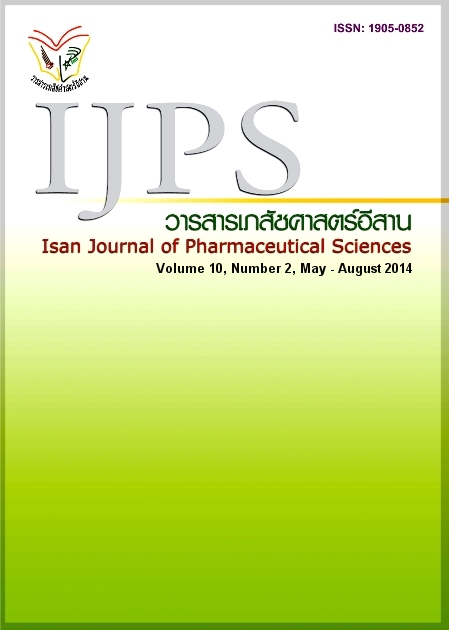Past…Present…Future of Pharmacy Education in Thailand (Part II)
Main Article Content
Abstract
This concept paper discusses the past, current status and future trends of pharmacy education in Thailand. Relevant primary and secondary data, evidences, facts and figures were compiled and presented along with data analyses and best possible estimation. Significant remarks and extrapolation were proposed in order to provide most plausible future prospects and to pinpoint critical considerations and opportunities for improvement for all stakeholders, particularly, university administrators, policy makers, and relevant professional affiliations and networks.
In the Part I, The definition of pharmacy profession, past and present of pharmacy education, evolution of pharmacy curricular and pharmacy teaching methods, the structure of 6-year pharmacy curriculum, name list of all harmacy institutes in Thailand and the first part from three parts of pharmacy education framework that is (1) the input (student admission) were explained.
The details of the second part of pharmacy education framework those are (2) the learning processes according to the curriculum. 10 key components of the pharmacy education process were thoroughly covered and identified, namely, the core knowledge of pharmacy, curriculum structure, quantity and quality of pharmacy educators, preceptors, and desirable student attributes, pharmacy education activities, good practices in pharmacy education, continuing pharmacy education (CPE), internalization, and professional postgraduate studies. Moreover the final part of pharmacy education framework that is the output of the process (pharmacy graduates) is also described in this Part II.
Article Details
In the case that some parts are used by others The author must Confirm that obtaining permission to use some of the original authors. And must attach evidence That the permission has been included
References
Accreditation Council for Pharmacy Education (ACPE). Accreditation Standards and Guidelines for the Professional Program in Pharmacy leading to the Doctor of Pharmacy Degree, Guidelines 2.0, January 23, 2011, Chicago, Illinois, 2011.
Atkinson J, Nicholson J, Rombaut B. Survey of pharmaceutical education in Europe, PHARMINE - Report on the integration of the industry component in pharmacy education and training, European Industrial Pharmacy 2012; June 13: 17-20.
Buchanan EC, Schneider PJ. Compounding Sterile Preparations, 3rd Ed., American Society of Health-System Pharmacists, 2009.
Glass BD, Haywood A. stability considerations in liquid dosage forms extemporaneously prepared from commercially available products. J Pharm Pharmaceut Sci 2006; 9(3): 398-426.
International Pharmaceutical Federation, FIP Statement of Policy on Good Pharmacy Education Practice, Hague, The Netherlands, September 2000.
International Pharmaceutical Education (FIP), Bruno A (Ed.), 2013 FIP Ed Global Education Report, The Hague, The Netherlands, 2013.
Program on Essential Drugs and Technology (HSE), Division of Health Systems and Services Development (HSP), Pan American Health Organization, World Health Organization. Basic Plan for Pharmaceutical Education (Working Group Proposal, Lima, Peru. 6-9 July 1998), Washington D.C., November 1999.
World Health Organization, The Role of the Pharmacist in the Health-Care System- Preparing the Future Pharmacist: Curricular Development, Report of a Third WHO Consultative Group on the Role of the Pharmacist, Vancouver, Canada, 27-29 August 1997.
World Health Organization Regional Office for
Europe, Development and reform of pharmaceutical education curricula in the Central Asian Republics, Report on a WHO Meeting, Tashkent, Uzbekistan, 8-9 October 1998, Copenhagen, Denmark, 1999.


